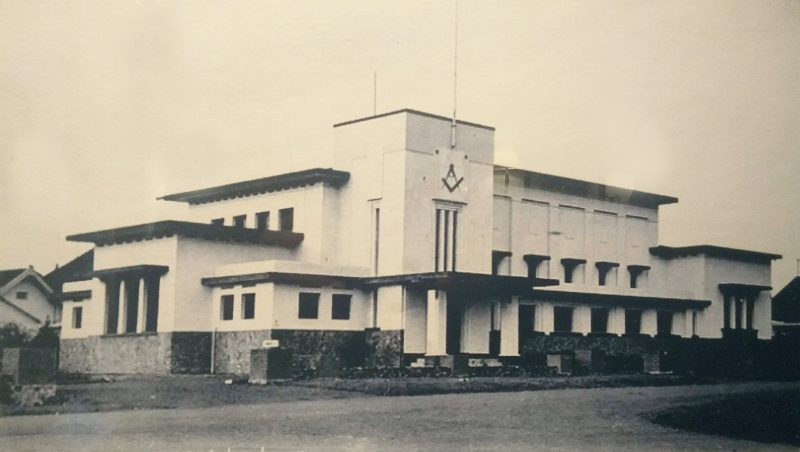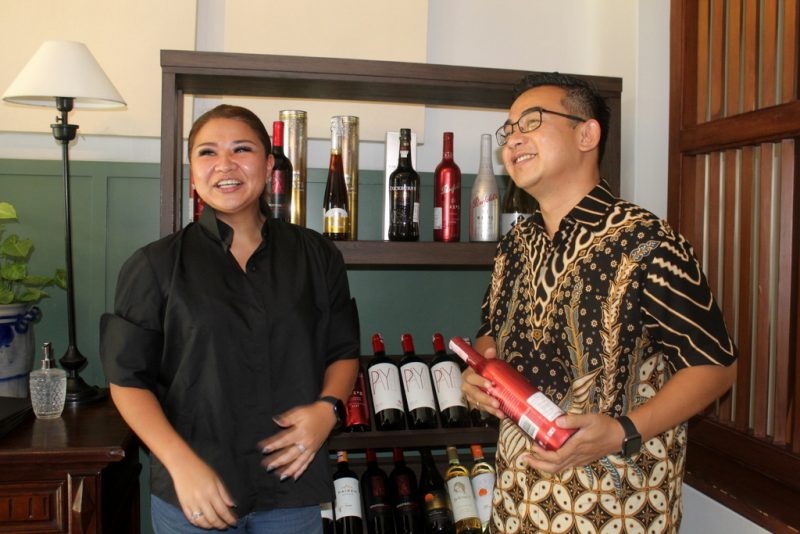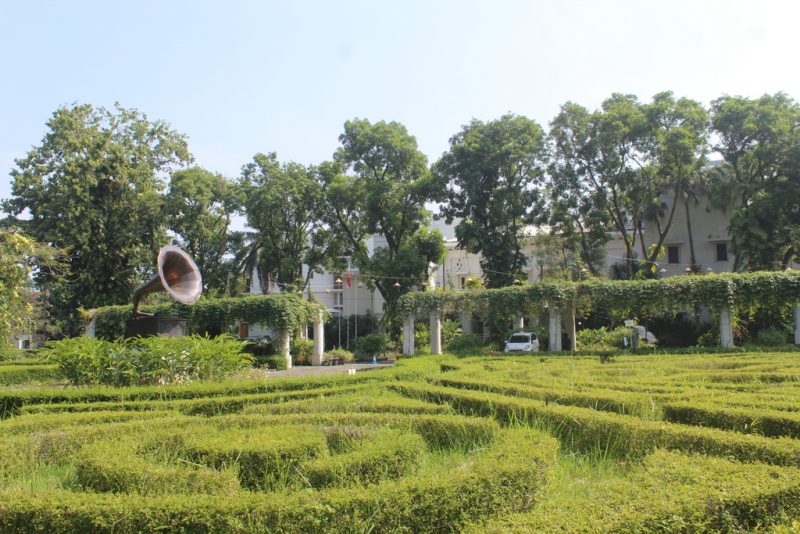It all happened long before Lily Jessica Tjokrosetio was born, so her wishes are fantasies, things she might have done had she been there.
Although raised in Surabaya, foremost would have been buying and preserving a particular house in Jakarta.
Jalan Pegangsaan Timur 56 was President Soekarno’s home and nothing grand, disappointing those who think significant events should take place in castles and palaces and be remembered in soaring statuary. But this was where he proclaimed the Republic on 17th August 1945, starting a revolutionary war that shattered the Hollanders’ hopes of hanging onto their colony.
“It was the birthplace of our nation,” said Lily. “Elsewhere it would be a memorial. If I’d been able to buy it, would still be there. We need to respect our past.” Yet the place where the Proclamator’s words rocked the world was demolished in August 1950.
It’s different elsewhere. The 1755 cottage of Captain James Cook’s parents were brought to Melbourne to recognise the first Briton known to have explored Australia’s East Coast in 1770. The house has become a major tourist attraction.

The 18th-century residence of first US President George Washington in Virginia is now a museum and a national monument, along with the homes of other founding fathers. Who’d dare suggest wreckers dash down such treasures and deny citizens the chance to feel their past?
“It wasn’t till I was sent from Surabaya to Europe in 1998 and started high school that I realised how important history is in other parts of the world,” said Lily.
She spent 12 years in the Netherlands before returning to become a director with the family’s edible oil business. She’s also the honorary Dutch consul in Surabaya.
Thwarted in her desire to preserve the Proclamator’s house, Lily turned to Malang and another building with links to the nation’s founder. In the hands of more mercenary owners, it might well have ended up as high-rise apartments. Instead, it’s a hotel, though it started life in 1933 as a Freemason’s lodge.
Freemasonry has faded this century but used to be an ancient secretive charitable Christian fraternity of leading men in the community. There can’t have been too many in Malang because the flat-roof art deco landmark soon became a Societeit Concordia, where elite Europeans gathered to dine, dance and do business.
That lifestyle crumpled in early 1942 with the Japanese invasion. After the war, it became Gedung Rakyat (the People’s House) and was used by the Komite Nasional Indonesia Pusat (Central Indonesian National Committee (KNIP) in March 1947.
There are reports that Soekarno, Vice President Mohammad Hatta, the Dutch-Indonesian nationalist Eugène Douwes Dekker and other prominent independence leaders were present, talking tactics to consolidate the revolution and expel the colonialists.

Then disaster struck. The Koninklijk Nederlands Indisch Leger (Royal Netherlands East Indies Army) launched Operation Product in a bid to clear Malang of guerrillas harassing the administration. Armoured vehicles and trucks of soldiers roared down the road from Surabaya.
In the face of overwhelming forces, the ill-equipped partisans retreated to the city starting a scorched earth campaign hoping to stop the colonialists from re-establishing themselves. On 31st July 1947, the sky above the ancient East Java hilltown was black with smoke from up to 1,000 burning buildings, including schools, offices, the town hall – and Gedung Rakyat.

Fortunately, it had been solidly constructed and fit for repair. When the war ended in 1949, it became the local HQ Radio Republik Indonesia (RRI) though soon outgrew the site.
Lily’s father Harjanto bought the site in 1993 and turned it into the Malang Inn. A new law banned foreign names so it became Graha Cakra Hotel.
Two decades later, it was time for a rethink about purpose and direction. Lily was as close as she’d ever get to owning a building associated with Soekarno in Malang. In 2014, The Graha Cakra closed to be renovated into a five-star boutique hotel of 44 rooms called Shalimar. This is supposed to mean “abode of love” in Sanskrit, though it’s also the name of gardens in Lahore, Pakistan.
But what style? Lily chose what she calls “modern colonial” trying to keep the original feel of the place in its early innocence. That was going to cost, but she says preserving the past is more than doing a service to the community; “I’m not a charity and the hotel has to pay. That doesn’t mean abandoning quality and good design.
“Of course, it will never be the same, but it would be wrong to try and wipe out history. It’s a gorgeous building, blessed with light, and that’s what we’ve preserved with white walls and generous use of space.”
Was it a good design? The frill-free, sliced-bread Nieuwe bouwen (new building) look beloved by Dutch architects almost a century ago is still seen in Malang, though many buildings lack care.
Shalimar could have become a museum of rusting radio gear though that would have only electrified techno-buffs. In the digital era, hot valves and fridge-size transmitters are not turn-ons.
In any case, broadcasting was an aberration in the building’s life. It was created as a place where people would meet.
The other local five-star is the Tugu (“we have an excellent relationship”) with a completely different design, walls of murals, rooms furnished with Javanese antiques, a subdued atmosphere in keeping with pre-colonial times.

Tugu is close to the city centre while the Shalimar is more than a kilometre away in Dempo. The prestigious suburb is famous for its wide tree-lined streets, schools and the splendid Ijen Boulevard.
Ensuring Shalimar blended with the surroundings was also important. The profile is low enough to allow views of the surrounding mountain ranges. Residents keen on relaxed strolls will find a world dramatically different from the gang (alleys) around the Alun-Alun (town square).
Opposite the hotel, gardens feature the statue of a gramophone, a reminder of the building’s radio past. It’s the sort of uncluttered uncommercial environment that would draw foreigners seeking quietude, but Lily thinks this species of tourist won’t be filling the streets anytime soon.
“It will take maybe three years before the international trade returns. Flights will be more expensive, there’ll be few cheap promos and restrictions on travel. We’ll have to rely on the domestic market.
“Malang is doing well with the government improving roads and focussing on creating a green city. But more has to be done. We have to think outside the box to attract tourists, offer authenticity. I hope that’s what we’re doing with Shalimar,” Lily concluded.




